1. Research and development 2018
1.1. Majority of researchers in the higher education sector are women, in enterprise only one in five
In 2018, altogether 73,900 persons were employed in research and product development tasks, one-half of them in enterprises. The total number of R&D personnel increased by 1,300 from the year before, that is close on two per cent. In practice, the growth came almost entirely from the higher education sector, where the number of personnel employed in R&D increased by four per cent. Proportion of women in R&D personnel remained unchanged and stood at 35 per cent. The share of female researchers varies by sector, as in enterprises only one researcher in five was a woman, in the government sector the share of women was 48 per cent and in the higher education sector 51 per cent. Seventy-five per cent of the R&D personnel were researchers and R&D engineers, while the rest were engaged in expert or support tasks related to R&D activity.
R&D in full-time equivalents amounted to 50,000 in 2018. The number increased by one thousand full-time equivalents from 2017 which translates to a two per cent growth. Unlike for R&D personnel, growth in R&D full-time equivalents was almost evenly distributed between enterprises and the higher education sector. Fifty-seven per cent of the staff-years were carried out in enterprises, 33 per cent in the higher education sector and the remaining 10 per cent in the government sector.
Figure 1. R&D personnel and R&D in full-time equivalents in 2011 to 2018
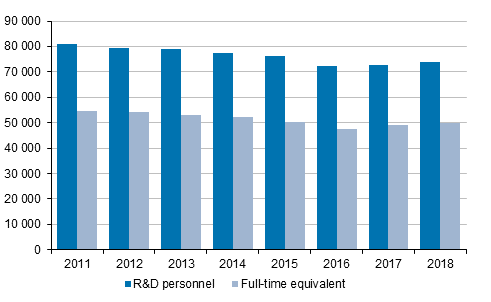
1.2. R&D expenditure grew by four per cent
The total sum of research and product development expenditure was EUR 6,438 million in 2018, which is EUR 265 million more than in the year before. In all, expenditure grew by 4.3 per cent and growth was strongest in enterprises (five per cent). R&D expenditure increased by 3.6 per cent in the higher education sector and by 1.6 per cent in the government sector from 2017. R&D expenditure is estimated 1) to grow in 2019 by around EUR 110 million to some EUR 6.5 billion. Growth is anticipated mainly for enterprises. The GDP share is estimated to be 2.71 per cent.
Table 1. R&D expenditure by performer sector and GDP share of R&D expenditure in 2010 to 2018 and estimate for 2019
| Year | Sector | Total | Share of R&D in GDP 2) | ||||||
| Business enterprise sector | Government sector 1) | Higher education sector | |||||||
| EUR mil. | % | EUR mil. | % | EUR mil. | % | EUR mil. | % | % | |
| 2010 | 4 854,5 | 69,6 | 692,0 | 9,9 | 1 424,8 | 20,4 | 6 971,3 | 100 | 3,71 |
| 2011 | 5 047,4 | 70,5 | 684,4 | 9,6 | 1 431,8 | 20,0 | 7 163,7 | 100 | 3,62 |
| 2012 | 4 695,0 | 68,7 | 662,2 | 9,7 | 1 474,6 | 21,6 | 6 831,9 | 100 | 3,40 |
| 2013 | 4 602,4 | 68,9 | 643,6 | 9,6 | 1 438,1 | 21,5 | 6 684,2 | 100 | 3,27 |
| 2014 | 4 409,5 | 67,7 | 613,1 | 9,4 | 1 489,5 | 22,9 | 6 512,1 | 100 | 3,15 |
| 2015 | 4 047,3 | 66,7 | 543,1 | 8,9 | 1 480,5 | 24,4 | 6 070,9 | 100 | 2,87 |
| 2016 | 3 901,7 | 65,8 | 534,6 | 9,0 | 1 489,8 | 25,1 | 5 926,1 | 100 | 2,72 |
| 2017 | 4 028,3 | 65,3 | 577,7 | 9,4 | 1 567,2 | 25,4 | 6 173,2 | 100 | 2,73 |
| 2018 | 4 226,9 | 65,7 | 587,2 | 9,1 | 1 623,8 | 25,2 | 6 437,9 | 100 | 2,74 |
| 2019 3) | 4 302,6 | 65,7 | 593,6 | 9,1 | 1 653,9 | 25,2 | 6 550,1 | 100 | 2,71 |
2) GDP 2015 and 2016 Statistics Finland preliminary figures, GDP 2017 forecast of Ministry of Finance. Due to revision of GDP the time series of share of R&D in GDP differ slightly from previoiusly. published figures
3) Estimate based on survey responses and other calculations.
Enterprises account for 66 per cent of R&D expenditure and domestic enterprises for 54 per cent of funding of expenditure. The government sector is responsible for nine per cent of expenditure, but in funding its share is 32 per cent (including basic funding of the higher education sector by the Ministry of Education and Culture). The significance of the higher education sector as a provider of funds is half a per cent, the share from abroad is 14 per cent.
Figure 2a. R&D expenditure by performer sector in 2018
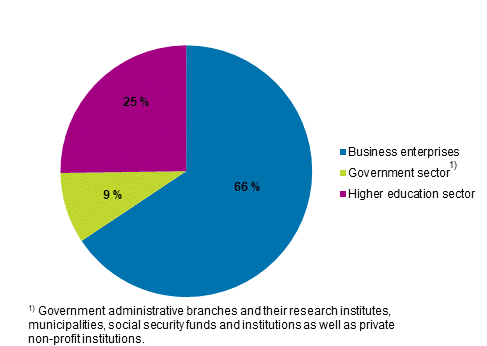
Figure 2b. R&D expenditure by funding sector in 2018
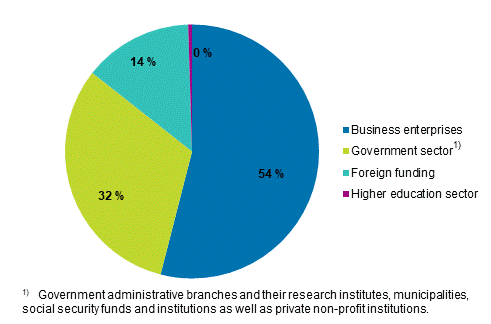
Finland’s GDP share of R&D expenditure was 2.76 per cent in 2017. Although Finland’s share has dropped in recent years, it is still higher than average for OECD and EU countries. Of the European Union’s gross domestic product, 1.97 per cent was spent on research and development in 2017. The corresponding share for the OECD area was 2.37 per cent. Based on the data for 2017, the most R&D intensive countries in the OECD area are Israel and South Korea (4.5%). The GDP share of R&D expenditure in Sweden and Finland were still on the same level in 2014 but since then while Finland’s expenditure has declined Sweden had rapid growth in research activities and the GDP share rose far above Finland’s to 3.4 per cent in 2017. 2)
Figure 3a. GDP share of R&D expenditure in certain EU countries in 2012 to 2017
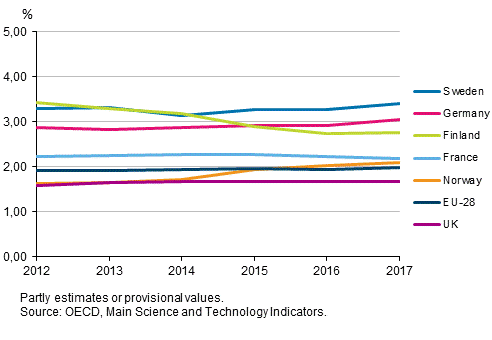
Figure 3b. GDP share of R&D expenditure in certain OECD and other countries in 2012 to 2017
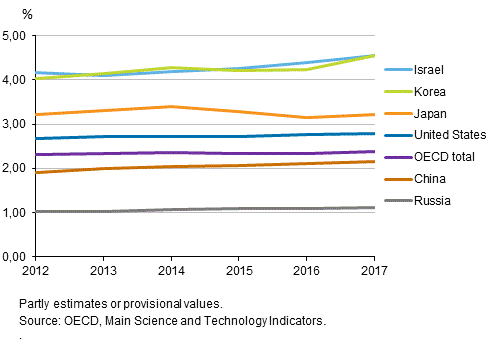
1.3. No change in the regional division of R&D expenditure
The expenditure of R&D practised in the region of Uusimaa amounted to EUR 3.2 billion in 2018, which is roughly one-half of R&D expenditure in the whole country. R&D expenditure in North Ostrobothnia was EUR 730 million and in Pirkanmaa EUR 700 million and their share of expenditure in the whole country was around 11 per cent. Including Southwest Finland, the share of the four biggest regions was nearly 80 per cent of R&D expenditure in the entire country. In all, the regional division of R&D expenditure remained unchanged.
Government sector research is centred in Uusimaa, the region’s share of R&D expenditure was 69 per cent. Thirty-nine per cent of the research in the higher education sector was performed in Uusimaa. The shares of Southwest Finland and Pirkanmaa were 12 per cent and that of North Ostrobothnia nine per cent. Of enterprises’ R&D expenditure one-half is directed at Uusimaa. The shares of Pirkanmaa and North Ostrobothnia are 12 to 13 per cent.
1.4. Extramural research amounted to EUR 320 million
Contracted R&D activity (Appendix table 2) refers to entire R&D projects or undertakings contracted out by the enterprise or organisation, which are not service purchases of own R&D activities or support functions. The coverage of the collected data is limited, because the statistics on research and development relate to enterprises or organisations practising R&D activities, so units only contracting R&D are excluded.
A total of EUR 320 million of contracted research was reported, EUR 88 million from abroad. Enterprises’ purchases corresponded to 84 per cent of the whole volume. In the higher education sector, research is contracted out quite rarely. Domestic enterprises made up one-half of service providers, totalling EUR 157 million. In this role, the higher education sector is also significant, as research services performed by domestic higher education institutions amounted to EUR 39 million.
1) Government administrative branches and their research institutes, municipalities, social security funds and institutions as well as private non-profit institutions.
2) OECD, Main Science and Technology Indicators. The OECD figure for Finland differs slightly from what is published nationally.
Source: Research and development 2018, Statistics Finland
Inquiries: Ari Leppälahti 029 551 3237, Heidi Pirkola 029 551 3246, tiede.teknologia@stat.fi
Director in charge: Mari Ylä-Jarkko
Updated 24.10.2019
Official Statistics of Finland (OSF):
Research and development [e-publication].
ISSN=2342-6721. 2018,
1. Research and development 2018
. Helsinki: Statistics Finland [referred: 18.12.2025].
Access method: http://stat.fi/til/tkke/2018/tkke_2018_2019-10-24_kat_001_en.html

